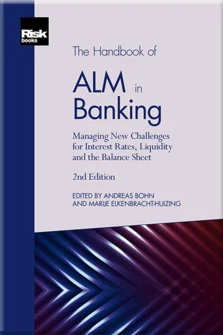Managing Interest Rate Risk for Non-Maturity Deposits
Introduction
Bank Capital and Liquidity
ALM in the Context of Enterprise Risk Management
The New Basel Standards on IRRBB and Their Implications for ALM
Measuring and Managing Interest Rate and Basis Risk
The Modelling of Non-Maturity Deposits
Modelling Non-Maturing Deposits with Stochastic Interest Rates and Credit Spreads
Managing Interest Rate Risk for Non-Maturity Deposits
Replication of Non-Maturing Products in a Low Interest Rate Environment
Managing Mortgage Prepayment Risk on the Balance Sheet
Considerations for ALM in Low and Negative Interest Rate Environments
Credit Spreads
Hedge Accounting
Supervisory Views on Liquidity Regulation, Supervision and Management
Measuring and Managing Liquidity and Funding Risk
Managing Reserve Assets
Instruments for Secured Funding
Asset Encumbrance
Capital Management
A Global Perspective on Stress Testing
Reverse Stress Testing: Linking Risks, Earnings, Capital and Liquidity – A Process-Orientated Framework and Its Application to Asset–Liability Management
XVAs and the Holistic Management of Financial Resources
Optimal Funding Tenors
Funds Transfer Pricing in the New Normal
Balance-Sheet Management with Regulatory Constraints
For many banks, non-maturing deposits represent a significant part of funding. However, there remains no commonly accepted approach to managing such deposits’ interest rate risk. We introduce two dynamic hedge strategies to stabilise the margin between investment return and client coupon. As extensions of Jarrow and van Deventer’s (1998) model, these strategies can be used for both interest rate risk management and funds transfer pricing.
An important goal in modelling non-maturing deposits11This chapter concerns deposit account types that lack a contractual maturity date. Examples are demand deposits, transaction deposits, negotiable order of withdrawal accounts, savings and money market deposit accounts. is to find an investment strategy22In this chapter the resulting investment portfolio is an imaginary portfolio, which is used to replace the non-maturing deposits on the liability side of the balance sheet for interest rate risk management. On the asset side the “real” investment portfolio, consisting of, eg, the loans the bank has originated, is used. that stabilises the margin independently of interest rate movements. Sales departments prefer a stable margin to help them
Copyright Infopro Digital Limited. All rights reserved.
As outlined in our terms and conditions, https://www.infopro-digital.com/terms-and-conditions/subscriptions/ (point 2.4), printing is limited to a single copy.
If you would like to purchase additional rights please email info@risk.net
Copyright Infopro Digital Limited. All rights reserved.
You may share this content using our article tools. As outlined in our terms and conditions, https://www.infopro-digital.com/terms-and-conditions/subscriptions/ (clause 2.4), an Authorised User may only make one copy of the materials for their own personal use. You must also comply with the restrictions in clause 2.5.
If you would like to purchase additional rights please email info@risk.net











